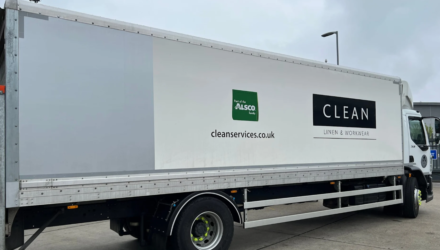Driver risk and licence checking specialist, Licence Check, has launched an online audit module, Driver Audit, within its award-winning, cloud-based risk management solution, DAVIS, in anticipation of an ‘explosion’ in the number of grey fleet drivers as a result of the Coronavirus pandemic.
 The Derby based business, part of the Ebbon Group, says that growing numbers of employees using their own cars on company business, rather than public transport, will increase the need for companies to carry out more robust checks to maintain compliance with legal obligations and health and safety regulations.
The Derby based business, part of the Ebbon Group, says that growing numbers of employees using their own cars on company business, rather than public transport, will increase the need for companies to carry out more robust checks to maintain compliance with legal obligations and health and safety regulations.
However, with many companies acknowledging they have inadequate records of the numbers of grey fleet drivers they currently have on their fleet, a sensible starting point would be to carry out a detailed audit of their workforce to better understand the scale of the problem.
The new online module allows the adoption of other services within the DAVIS system or can be run as a stand-alone exercise.
Businesses can use it to audit their employees to confirm a number of different issues. These include who is driving for business and the vehicle they use, confirm ownership, how far they are driving for work, the times of day, the types of road typically travelled and accident history.
The responses produce a risk score per driver which is aggregated to give a company-wide risk profile. This in turn provides evidence that they have properly investigated and the risks assessed as a responsible company, with a clear audit trail for insurers.
The data collected in the audit can also be used to seamlessly populate records within DAVIS for those driving for business.
Once a driver is registered, DAVIS can check that drivers have valid driving licences and ensure that drivers have access to company policy documents, and that these have been received and understood.
Grey fleet drivers identified from the audit can be imported into the existing DAVIS grey fleet module which checks that the vehicle is taxed, and verifies its engine size, CO2 emissions and MOT status against DVLA records.
The grey fleet module also allows drivers to enter their own insurance details to ensure they are covered for business use along with all service history. A facility has been added to support roadworthiness checks they need to complete to verify their vehicles are in a safe condition and fit for purpose.
As with many of the DAVIS services, the emphasis is on the driver to complete his or her details, and as much of the process is automated, there is only minimal admin work required to complete the audit while time spent chasing drivers is significantly reduced.
“With more employees becoming home based and intending this to be permanent, reduced numbers of company cars and with those that do come into the office avoiding public transport, the only obvious alternative must be people increasingly using their own cars for business purposes,” said Terry Hiles, General Manager at Licence Check.
“The grey fleet issue should become an area of increasing concern in the ‘new normal’ and robust systems need to be in place to ensure businesses are compliant and fully covered. Doing nothing should not be an option.”
A Driving for Better Business survey last summer identified that 60% of senior managers had no idea of the size of their grey fleet and 53% thought it wasn’t their responsibility to know this or to manage these drivers.
“This suggests that, if there is an explosion in grey fleet numbers, more people will be in their own vehicles with poor or totally inadequate management systems in place. There is clearly a hard-core of senior managers or directors that, despite being told this is their responsibility to manage, still ignore the problem or refuse to believe it is something they need to address,” said Terry Hiles.
“They really need to audit their employees to confirm who is driving for business, establish the vehicle they use for this and whether it is company or privately owned to get a handle on the size of the problem. The results will then clarify how it needs to be addressed,” he added.




















